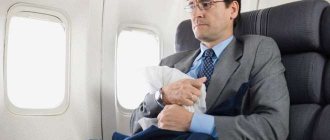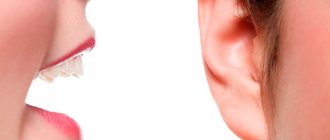Claustrophobia is a mental disorder accompanied by panic in a closed space, which has no logical explanation. The fear intensifies many times over in cramped low rooms, elevators, and “deaf” rooms without windows. People suffering from this phobia feel uncomfortable among a crowd of shoppers in a supermarket or similar place. They try in every possible way to get away from the situation and type of activity that provokes an attack of fear. A mental disorder transforms the behavior and habits of an individual, even to the point of refusing to leave his home.
Why does claustrophobia occur?
Most human fears are based on situations that pose a threat. Fear is a modified instinct of self-preservation. Let's try to figure it out, claustrophobia, what is it according to the theory of evolution? Fear is a kind of protective element that warns against participation in potentially dangerous situations. The ancestors were afraid of closed spaces and risked moving through narrow underground passages and caves due to the possibility of collapse. Experiences at the genetic level were transmitted to modern representatives of humanity.
The second risk factor is disruptions in brain function. Testing confirms that in people suffering from claustrophobia, this is manifested by a decrease in the right amygdala, which is responsible for the production of positive and negative emotions. The frontal nuclei send impulses to other limbic compartments, accelerating the heartbeat, causing shortness of breath.
Childhood psychotrauma suffered in closed spaces is associated with a risk of developing the disorder in question. Memories can be erased, but in the subconscious they give rise to hidden emotions: worry about one’s life, hopelessness syndrome. The body repeats the situation if the environment reminds of what it experienced in the past. There are known cases of claustrophobia occurring after trauma in adulthood. For example, among miners or speleologists who survived landslides.
Overly suspicious parents risk developing a fear of closed spaces in their children. This is due to constant warnings that the elevator is dangerous, the closet is dark, the basement is cold. The logical meaning of phrases is lost over time; the adult personality simply remains with the subconscious confidence that closed spaces are unsafe.
Claustrophobia is sometimes caused by a thirst for discovery or dramatic change. Scientists have found that people with this disease have a powerful character, are active and inquisitive by nature. Their brain requires productive activity, is aimed at discovery, and is critical of stability.
Individuals with the opposite of claustrophobia, agoraphobia, prefer comfort and have a negative attitude towards change. Individuals’ fears manifest themselves on the streets, markets and other crowds of people. It is not entirely correct to say that this diagnosis is the antithesis of the fear of closed spaces.
Don't make mountains out of molehills
Some people tend to imagine everything in the worst light, especially if they indulge in their emotions. For a nervous passenger, even a tense look from a flight attendant can mean there is some problem with the plane. Every click, shake, intercom beep, speed change, or air conditioning switch off can seem like a hint of an impending accident. But this is not at all true. There is a simple explanation for everything; you just need to strive to see events as they are, and not choose the worst possible thing.
- The flight attendant is not tense - she is tired or irritated.
- It is common for an airplane to change speed as it climbs to a certain altitude.
- The plane sometimes turns according to its trajectory.
- The intercom can frequently emit signals to organize the crew's work.
- Aircraft equipment sometimes makes noise.
Potential Risks of Fear of Enclosed Spaces
What this is, people who are prone to mental disorders, accompanied by fears, should know. This includes:
- large doses of caffeine (increases the degree of anxiety and heart rate);
- alcohol abuse, taking drugs (the brain is affected by toxins, the psyche is overloaded);
- methodical intimidation of children is fraught with severe psychological trauma, the consequences of which manifest themselves in adulthood;
- telling your child about your own fears;
- Claustrophobia often develops in people who are overly interested in horror films, especially if the plot involves elevators, dark rooms and similar places.
Look at the facts
No matter how much fear you experience while flying, do not forget that statistics are on your side. It has been proven many times that traveling by car is several hundred times more dangerous than flying by plane for the same distance. The chance of a fatal plane crash is negligible, approximately 1:16,000,000. In addition, in 95% of plane crashes, not all passengers become victims. However, if these significant facts do not have their desired effect on your attitude towards flying, let's look for other ways.
Symptoms of claustrophobia
Everyone should know what the fear of closed spaces is called. The following are factors characteristic of the disease. A person is subject to frequent fears and discomfort when entering an elevator, small room, basement or other room without windows.
Psychological and physical features of the manifestation of claustrophobia are given in the “diagnosis” section. Symptoms of the disease also include behavioral nuances of individuals with a fear of closed spaces:
- in rooms they are located close to the exit;
- try not to close doors or windows;
- in a closed or “dead” room they are noticeably restless and cannot find a place for themselves;
- do not use public transport, especially during rush hours;
- avoid elevators and long queues.
If five or more actively expressed signs are observed, the attack of claustrophobia develops into a panic attack. The need to contact a psychologist or other specialist in the field of psychology is indicated by the manifestation of these symptoms. If this is done untimely, the course of the disease worsens and develops into a chronic stage. The individual becomes depressed, lethargic, avoids communication, and radically changes behavior.
Make yourself comfortable
Typically, there is a cool air nozzle located above each seat on an airplane. Open the nozzle and point it at your face - the cool air promotes relaxation and calm. If moments of turbulence in flight are especially unpleasant for you, try to choose a seat closer to the wing of the plane, where it is less felt. When the plane has already gained altitude, you can imagine that you are traveling on a bus, and if it sometimes shakes, it’s because the bus is running over speed bumps or driving along a dirt road. A good imagination can not only frighten, but also, on the contrary, help overcome the fear of air travel.
Diagnosis of manifestations of phobia
Fear of closed spaces must be distinguished from other manifestations of a similar plan - lack of confidence in one’s abilities, modification of some personality traits, depressive, paranoid processes.
Psychological and physical signs of claustrophobia:
- twitching and unpleasant coldness in the limbs;
- rapid breathing;
- tachycardia;
- migraine;
- fear of suffocation, inability to leave the room, ability to control oneself;
- fear of situations that provoke attacks;
- pallor or redness of the skin;
- lack of coordination;
- an active state of anxiety or entering a stupor.
Claustrophobia is diagnosed using the Spielberger-Hanin test. The client chooses one of four versions of the answer to the tasks. The results are calculated using a special key. A score above 45 points indicates a risk of developing an illness; from 75, panic attacks are added to attacks of claustrophobia.
Establishing a diagnosis using MBK-10
This disorder occurs if all of the following symptoms are met:
- there is anxiety, accompanied by psychological or vegetative manifestations;
- delusions or intrusive thoughts are not the primary causes of anxiety expression;
- stress is activated only in a confined space or a huge crowd of people;
- There is a moderate avoidance of processes that contribute to the development of fear.
After the examination, a diagnosis of F40.00 or F40.01 is made (phobia without/with panic manifestation).
Relax your body and your mind will calm down too
Fear is a physical reaction to what is happening in the mind. It also works the other way around. When your body is relaxed, your mind will not be able to maintain fear for long. We are all endowed with an “empathetic” nervous system that reacts to fear or panic attacks by increasing the amount of adrenaline, increasing heart rate, increasing sweating - i.e. everything that can be useful if you are about to fight a tiger, but completely useless when you are just flying on an airplane. This process requires you to inhale and exhale frequently. Therefore, an excellent technique for relaxing and removing the body from a state of “high alert” is to consciously slow down your breathing - inhale, exhale more slowly. In addition, direct your attention to different parts of the body, mentally repeating: my arms relax, my legs relax, and so on.
How to get rid of attacks of claustrophobia
You can help a person suffering from the disease in question by following the recommendations of psychologists, reducing the degree of fear and preventing a panic attack:
- Communication on neutral topics. You should not convince others that fears are safe, since they are irrational. It is better to find a common topic of conversation, trying to focus on pleasant things or events.
- The power of touch. If a loved one suffers from fear of confined spaces, hugging and stroking can help relieve the peak of stress. Breathe in unison, which will normalize your heart rate while being calming.
- Sustained wide smile. This method works by contrasting fearful impulses and the body's response. The panic subsides after a couple of minutes.
- Change of concentration. Claustrophobia focuses all attention on experiences. It is necessary to bring him back to reality. To do this, they ask you to focus on the face of a fellow traveler, a picture, elevator accessories, and the like. You should study all the smallest details for a few minutes, close your eyes, and describe what you did out loud. Children are involved in a kind of gameplay, counting who can find the most distinctive features.
- Many people know in general terms what claustrophobia is. But few people realize that symptoms can be relieved with the help of a modern device. Calling your family, looking at photos, or playing your favorite game can reduce the level of fear.
- Breathing exercises. Abdominal breathing helps a lot. While inhaling slowly, inflate the stomach, exhale slowly through the lips like a duck. You can imagine that the negativity accumulated as a result of stress comes out.
- Activating the speech center through singing can reduce anxiety.
It's worth studying a little about the physics of flight
Be that as it may, knowing the basics of an airplane and the principle of its flight can seriously help overcome fear. It doesn't hurt to spend some time becoming familiar with how an airplane takes off, how air currents help it, and how it is similar to water (with its currents and the ability of things to float in currents). Therefore, the phrase: “There is nothing 10,000 meters between me and the Earth!” immediately loses its meaning. An airplane is designed to glide. Also important is the fact that in addition to the passengers and crew of the plane in the air, there is a whole team of people on Earth monitoring every stage of the flight.
How to treat claustrophobia
The person is explained in a clear manner that the problem will not go away on its own. You need to contact a psychologist who will eliminate the disorder in several sessions. In this case, hospitalization is not required.
Special techniques for treating fear of confined spaces:
- Transformation of belief. The specialist works with the client’s modal senses (vision, touch, hearing). They act as a channel designed to correct the subconscious. The communicator therapist composes a text where he uses control words and phrases. The impact is aimed at convincing that there is no danger in closed spaces.
- Hypnotherapy is an effective way to treat claustrophobia. Professional hypnologist-psychologist Nikita Valerievich Baturin eliminates fear in a few sessions. He puts the client into a trance until complete relaxation, simultaneously finding out the root cause of the disorder. The hypnotherapist uses the classical system (clear and unambiguous commands) or the Ericksonian method (working with images and pictures at the level of the individual’s subconscious).
- Neurolinguistic programming. In this case, claustrophobia is leveled by instilling in the person’s brain a critical situation associated with fear. However, the client is not included in this image. Then a colorful image is created where he appears proud, calm, completely free of the problem. The first element is shown large, the second - small and inconspicuous. They perform a kind of manipulation by waving their hands, after which the pictures change places with an increase in the desired image.
- Treatment of claustrophobia with a behavioral approach. The procedure is performed in stages. Under the supervision of a specialist, a person is placed in an environment where he experiences an attack of claustrophobia, for example, an elevator car. At first, the immersion lasts for several seconds, with a gradual increase in the duration of the sessions. The goal is to enable the client to learn to control himself, relax and disengage from a stressful environment. If panic occurs at any stage of the process, the lesson is suspended, returning to easy situations.
- Autotraining. The technique is based on muscle relaxation and self-hypnosis. In terms of effectiveness, the technique is compared to hypnotherapy. The difference is that the individual’s subconscious and mind work together, he is introduced directly into the treatment, and is able to independently improve the course of classes. Autogenic exercises increase the capabilities of the parasympathetic nervous system, minimizing the physiology of claustrophobia.
Successful relief from the fear of closed spaces depends on the client’s desire for this, the proper experience and qualifications of the specialist, and compliance with the assigned recommendations.
You need to give up the desire to control everything
`-Let everyone sit down in their seats, they are rocking the plane!` `-It would be easier if I could get off at any moment.` `-I want to fly without any noise at all and without shaking!`
Fear can make you want to control the flight or fly an airplane (even if you don’t know how). There are statistics that show how much safer air travel is than traveling by car. Many people associate the ability to directly drive a car with a reduced sense of fear. However, can people influence how other drivers drive their cars? In the case of an airplane, you can almost 100% forget about the presence of other air traffic participants, because... trajectories and flight times are calculated in advance. The aircraft is under the control of two professional pilots who regularly undergo checks and tests. Therefore, once you relax and trust the professional crew, you will be able to appreciate the moments of the flight when you do not have to answer phone calls and be responsible for something. Remember that the flight of an airplane does not depend in any way on the concentration of your attention on it, do something - read a book, listen to music, chat with your neighbors, sleep. You have every right to a well-deserved rest. Your flight time will go by much faster if you use it to your advantage.
You may not have thought about it until now, but risk is a natural and integral part of our lives, which does not require us to worry about it. Fear often comes from anticipation, assumption, doubt, worry, and a desire to control the future. Although in most cases you just need to accept what happens calmly, completely trusting life, and not associate yourself with an omnipotent magician. A calm perception of what is happening and impartial observation will help you fall in love with flying.
How to cure a phobia with medication
Several groups of drugs are used in drug therapy:
- Tranquilizers (Gidazepam). They have a psychosedative effect on areas of the central nervous system, have a pronounced calming effect, and relax the skeletal muscles. The downside is that they are addictive and require specialist prescriptions.
- Antidepressants of the tricycline category (Imipramine) prevent the reverse release of adrenaline by nerve channels, stabilize the psyche, and prevent the breakdown of serotonin (the good mood hormone). After taking them, the activation of fears and depression decreases. The effect is replaced after 6–7 days.
- In the treatment of claustrophobia, beta-blockers (Atenolol) are used. Medicines reduce the sensitivity of receptors to adrenaline, reducing the manifestation of panic fear, stabilizing heart function.
Practice a successful flight
All this advice, of course, is good, but the necessary information tends to be forgotten in the “field conditions”. Therefore, another interesting technique is to practice in your mind a calm and comfortable stay on the plane even before the actual air flight. Repeating this practice allows the body to automatically relax while already on the real plane.
To rehearse, sit with your eyes closed and begin to breathe deeply, with longer exhalations. Now, with a relaxed body and mind, begin to imagine how you pack your things and go to the airport, receive an air ticket at check-in, go through security, board the plane and the flight itself to your destination. Imagine how calm and relaxed you look from the outside, thinking about everyday things, communicating with people, reading a magazine. The more you practice this, the more your mind and body will associate flying with a calm and happy state.
If during practice you begin to feel anxious or afraid, try to stop the flow of thoughts. Think about something interesting, something you love, or anything that will shift your focus away from fear and onto something else. Listen to your own breathing, count to a thousand, try to remember the alphabet backwards.
Small tips
- Take something with you on the flight that will distract you: magazines, crosswords, iPod, books, laptop, etc.
- Buy a seat next to the aisle, not a window. This way you will be calmer, and you will be closer to the crew, who are always happy to help.
- Play a flight simulator on your computer. While playing the game you will feel that flying is not scary at all.
- Fly with a friend, preferably someone who has flown many times and is not at all afraid.
- Think in advance about how to spend your time while flying.
Be that as it may, defeating the fear of air travel is another chance to improve yourself and become stronger and more perfect. We hope that you have gained useful information about how to stop being afraid of flying on an airplane. Moreover, you need to learn to enjoy flying on an airplane, because it is truly a huge privilege from both a technical and social point of view. The ability to fly is available to only a few, even in the modern world. Therefore, now you can safely buy cheap air tickets and fly surrounded by heavenly landscapes of clouds.
aviapanda.ru











